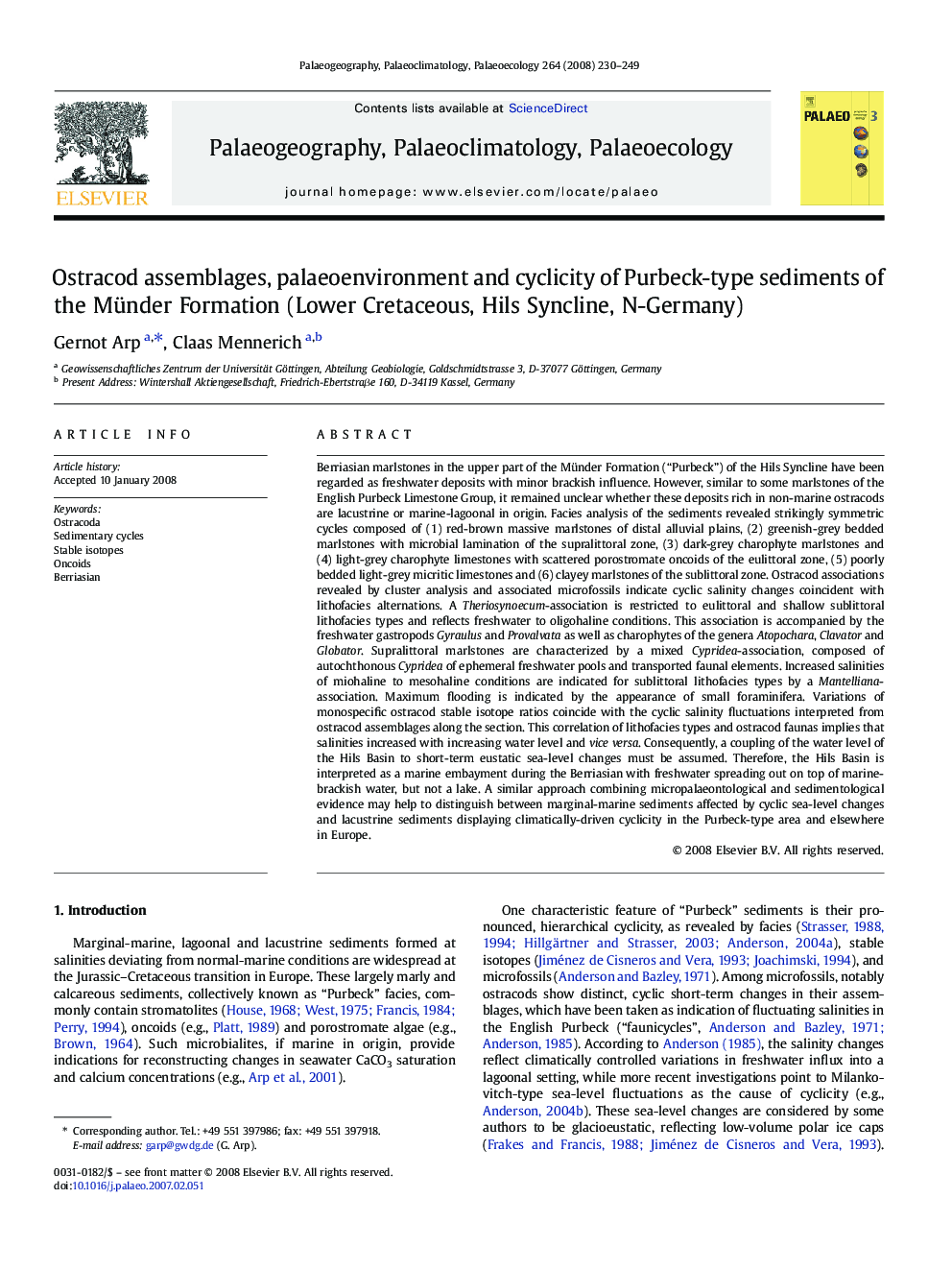| کد مقاله | کد نشریه | سال انتشار | مقاله انگلیسی | نسخه تمام متن |
|---|---|---|---|---|
| 4468380 | 1622325 | 2008 | 20 صفحه PDF | دانلود رایگان |

Berriasian marlstones in the upper part of the Münder Formation (“Purbeck”) of the Hils Syncline have been regarded as freshwater deposits with minor brackish influence. However, similar to some marlstones of the English Purbeck Limestone Group, it remained unclear whether these deposits rich in non-marine ostracods are lacustrine or marine-lagoonal in origin. Facies analysis of the sediments revealed strikingly symmetric cycles composed of (1) red-brown massive marlstones of distal alluvial plains, (2) greenish-grey bedded marlstones with microbial lamination of the supralittoral zone, (3) dark-grey charophyte marlstones and (4) light-grey charophyte limestones with scattered porostromate oncoids of the eulittoral zone, (5) poorly bedded light-grey micritic limestones and (6) clayey marlstones of the sublittoral zone. Ostracod associations revealed by cluster analysis and associated microfossils indicate cyclic salinity changes coincident with lithofacies alternations. A Theriosynoecum-association is restricted to eulittoral and shallow sublittoral lithofacies types and reflects freshwater to oligohaline conditions. This association is accompanied by the freshwater gastropods Gyraulus and Provalvata as well as charophytes of the genera Atopochara, Clavator and Globator. Supralittoral marlstones are characterized by a mixed Cypridea-association, composed of autochthonous Cypridea of ephemeral freshwater pools and transported faunal elements. Increased salinities of miohaline to mesohaline conditions are indicated for sublittoral lithofacies types by a Mantelliana-association. Maximum flooding is indicated by the appearance of small foraminifera. Variations of monospecific ostracod stable isotope ratios coincide with the cyclic salinity fluctuations interpreted from ostracod assemblages along the section. This correlation of lithofacies types and ostracod faunas implies that salinities increased with increasing water level and vice versa. Consequently, a coupling of the water level of the Hils Basin to short-term eustatic sea-level changes must be assumed. Therefore, the Hils Basin is interpreted as a marine embayment during the Berriasian with freshwater spreading out on top of marine-brackish water, but not a lake. A similar approach combining micropalaeontological and sedimentological evidence may help to distinguish between marginal-marine sediments affected by cyclic sea-level changes and lacustrine sediments displaying climatically-driven cyclicity in the Purbeck-type area and elsewhere in Europe.
Journal: Palaeogeography, Palaeoclimatology, Palaeoecology - Volume 264, Issues 3–4, 17 July 2008, Pages 230–249